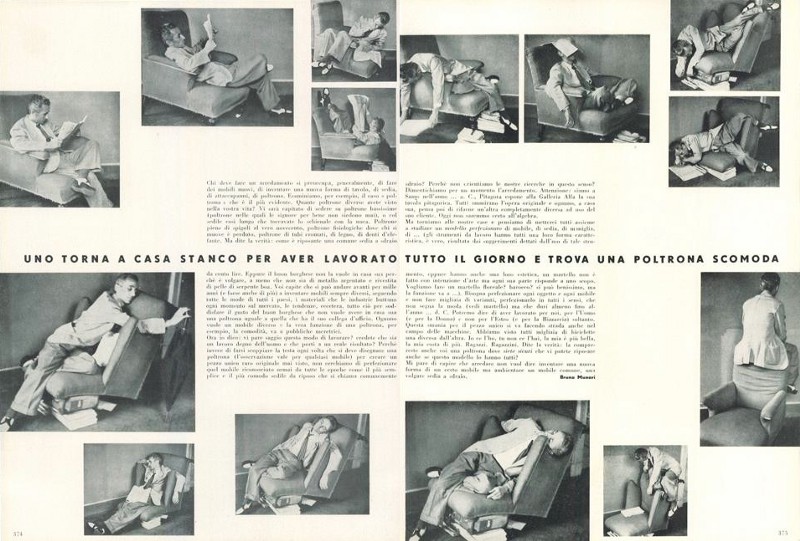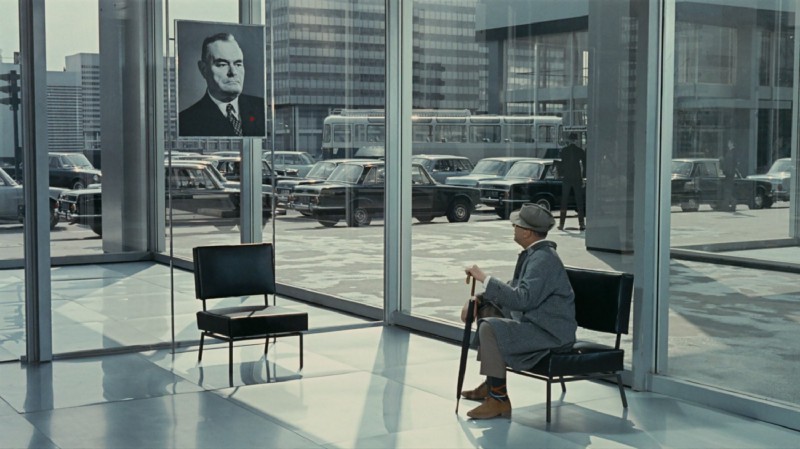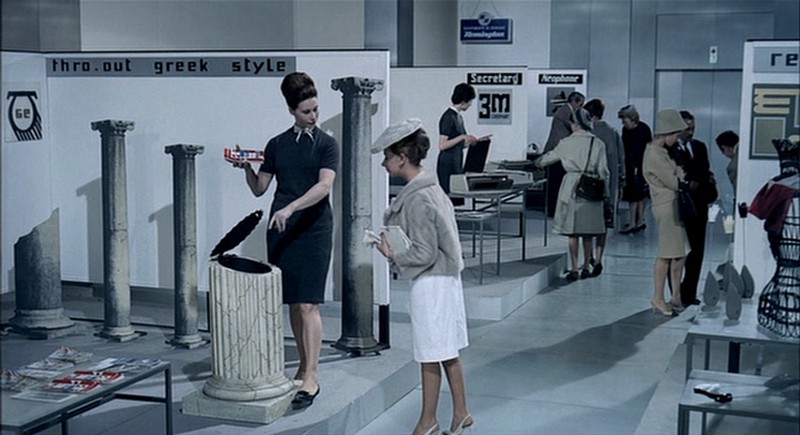SCUFF WORLDWIDE
Bruno Munari's book 'Design as Art' is a foundational book for me, I first read it as I started taking graphic design seriously as a hobby-stroke-side gig. The book is one of few examples where an accomplished designer, graphic or otherwise, talks normally and playfully about the discipline. It's no mystery that the discipline is often filled to the brim with pretentiousness, for whatever reason this may be, but Munari's writing lacks this. Instead, he plows through topics and examples aiming to excite and engage the reader in aspects of design. The book is a design book for normal people, the perfect introduction to thinking about design.
In my view, the intention of much of Munari's writing on design is to demystify the field. Proliferating it from a centralized group of professionals and toward the everyperson. A multi-discipline renaissance man during his time, Munari had an output that spanned product design, graphic design, education, and of course writing. Throughout the pages of 'Design as Art', you will find an investigation of the architectural advantages of a traditional Japanese house, alongside tips on logo design and typography. His advice is not one of wanton experimentation but widening how we approach and understand design.
If you want an excellent primer on all things design then 'Design as Art' is certainly the book for you. However, I wanted to explore a different work by Munari. As always I find myself interested in the mundane or 'normal' designs of everyday life, something that informs my zines and other graphical work. I have very little knowledge of product design but I often find myself musing on these mundane objects, particularly during bouts of procrastination. Munari", a muser himself, explores some interesting ideas in "Seeking Comfort in an Uncomfortable Chair" that got me thinking more about the objects we sit on.
ARTICLE ARCHIVE
"isn't it relaxing to sit on a cheap (100 lire) and ordinary lounge chair? Yet the bourgeoisie does not want one in their homes because it is vulgar - unless it is in silver metal and covered in snakeskin."
Seeking Comfort in an Uncomfortable Chair, Bruno Munari
A still from Playtime of Hulot sat on an uncomfortable chair
Finding Comfort in the Super Normal: From Munari to Morrison
Why sit in an uncomfortable chair?
In 'Seeking Comfort in an Uncomfortable Chair', Munari goes into the details of why a product design focussed on usefulness is superior to one focussed on the generation of capital. The aim of the design should be to perfect the known forms of that object, rather than to focus on creating something different and alluring. That isn't to say that it is a call against originality. It is more a call towards the creation of objects that are designed with humanity in mind, the 100 lire chair, if comfortable, will always be better than an uncomfortable and expensive chair. The cheap chair simply performs its function better. It's a manifesto of sorts, accompanied by some charmingly strange photos of a man doing what the name suggests, seeking comfort in an uncomfortable chair. At the end, Munari proclaims: "Children. Tell the truth. Wouldn't you buy a chair that you are sure that you can relax on even if everyone else owns one?".
The closing sentiment contrasts much of the design world at the time where the drive is to create unusual things that are eye-catching, the kind of thing which Munari claims are the interests of the bourgeois, pricey designer items that lack functionality and instead aim to be talking pieces amongst peers. The ugly, but comfortable chair is set aside in favour of the extravagant and unique, the reasoning is not that this chair is better but instead that it differentiates one from the masses. Munari's beliefs represent a particular view at that time amongst select designers, the belief that design has lost its meaning. His words, perhaps disappointingly are relatable today, as the function of design is often within the generation of capital rather than the betterment of humanity.
Playtime - Discomfort in Modern Europe
Munari's exploration into the uncomfortable chair reminds one of a scene in Jacques Tati's film 'Playtime', where quasi-protagonist Monsieur Hulot finds himself seated in an office lobby. The chair, much like the one Munari describes, is made of polished silver metal with a seemingly luxurious leather upholstery. The problem, however, is with the chairs' lack of comfort. As Hulot attempts to find comfort he is left confused by the strange springy upper of the chair and the lack of support in the cushion. Assuming this particular chair is faulty, he tries another only to find similar problems. The chair fits into the hyper-modernity of Playtimes set, a world that is confusing and vapid to those who were accustomed to the world they grew up in.
Later on in the film, another chair appears, this time in a trendy new restaurant. These chairs feature backs formed of metal wire in the shape of a crown. Stylish and impressive. However, the wealthy clientele seems unaware of the damage the chair is causing, as the thin metal construction creates impressions on their clothing and skin. Yet again, the design of the chair has failed by sacrificing usability for style.
Munari's chair and Tati's chair share a lack of functionality and are objects that aim to be desirable before they are useable. The world of Playtime is at many points beautiful and impressive, but the viewer is always reminded of the absurdity of modern design. In another part of the film, Hulot finds himself bumbling through homogenous glass tower blocks with identical architecture, at one point he comes across a design expo where he is introduced to a bin: "thro.out Greek style", a clear double meaning as the bin is stylised as a Greek column whilst representing the changing of society and thus design philosophy. Much like the chairs, the bin aims to be striking and eye-catching but to Hulot, and the viewer, its design is strange and uncomfortable.
The aim of Playtime isn't to criticise the modern forms that surround us. It is no mistake that the buildings and set design of Playtime are beautiful. Instead, the critique appears to those who are buying into the absurdities of consumerism, products that seem unwaveringly modern but yet fail to provide us with their supposed objective.
Super Normal - Reframing Design Intentions
"My opinion is that the design world has drifted away from normality… designers are supposed to take care of the man-made environment and try to improve it" - Jasper Morrison
From Munari's manifesto in the 1940s to the early 2000s, we encounter a surprisingly similar manifesto. Founded by hugely influential designers Jasper Morrison and Naoto Fukasawa, the Super Normal ethos is a unique concept that can be difficult to define.
A Super Normal object is that which isn't over-designed, an object that assists and improves daily life in some fashion. Rather than be flashy or fine, a super normal object will focus on its base function. A coffee mug of the correct proportions that indescribably feels good to use in the morning. Some of these objects may be coveted and expensive but a vast amount of them are simple, useful objects that are anonymously designed; by extension, these objects are typically affordable.
It's the opposite of the uncomfortable chair, or the chairs found in Playtime which are instead objects that want to appear designed. In both Fukasawa and Morrison's designs there is often a semblance of not over-designing. As Morrison explains, these objects are like a plate that is more plate-like than any other plate. An almost unexplainable feeling. The idea is vague and moves beyond the aesthetic and moves toward a tactile and kinetic philosophy, the object should look, feel and be usable as you would expect its name would suggest. Ultimately, the hope is for the Super Normal to be humanistic, to better our daily lives through ego-less design.
It's interesting to see this theme play through over fifty years of design thinking, a soft rumbling of voices that appreciate the everyday; the mundane kind of design that if you take time to think about you start to appreciate. As we become exposed to an increasing amount of cheaply produced designs with little regard for their daily usefulness it's hard not to pine for the 100 lire chair. The kind of chair that is effortlessly useful, comfortable but simply and cheaply produced. Much like Hulot, many of us are often overwhelmed with the vast advancement of consumerism, which appears to inflate beyond reason year after year.
Of course, it is not easy to design affordable, good design or to expect a perfectly designed chair at an affordable price, but what these three examples have in common is the belief that design should be dedicated to the betterment of human life, the idea that a designer should place ego on the back burner and instead create with a humanistic approach. Good design is subjective in many ways, there is always room for artistic expression, of that I think Fukasawa, Munari, Morrison, and Tati would all agree. But when it comes to an object like a chair why would we choose to sit in an uncomfortable chair?



thro.out greek style
A photo from the Super Normal Exhibition
This website is non-commercial and images are used for commentary purposes only.
https://jaspermorrison.com/
https://www.danesemilano.com/en/designerDetails?idDesigner=15
https://designmanifestos.org/bruno-munari-seeking-comfort-in-an-uncomfortable-chair/
SCUFF 8